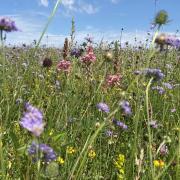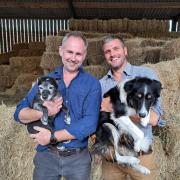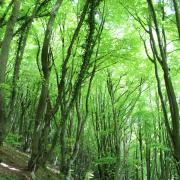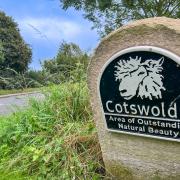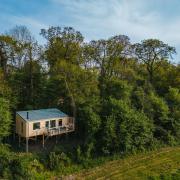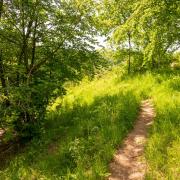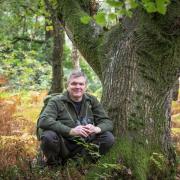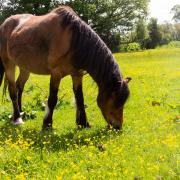Berkshire, Buckinghamshire & Oxfordshire Wildlife Trust teams up with Blenheim Estate to put nature first
An ambitious new project to make nature’s recovery a priority on a major part of the historic Blenheim Estate in Oxfordshire has been announced.
Experts from the Berkshire, Buckinghamshire & Oxfordshire Wildlife Trust (BBOWT) will be supporting Blenheim’s land managers and partners, to put wildlife and the environment at the centre of plans for 2,000 acres in the northern section of the estate.
The project aims to protect and restore wildlife and wild habitats and improve the long-term sustainability of the site. It will champion new nature-friendly farming techniques, to improve soil health and biodiversity.
The team will also look to provide new environmental education opportunities for the local community and improve access for people visiting the estate.
BBOWT’s Chief Executive, Estelle Bailey, says, ‘We have a vision for our three counties of more nature everywhere. We want to see 30% of land well managed for wildlife by 2030.

‘This wonderful partnership with the Blenheim Estate is a big piece of that wild jigsaw and we’re very excited about the future possibilities for nature.
‘Blenheim is already working hard for nature and climate. Our expertise will enable their team to take things to the next level, helping to make the estate a real showcase for regenerative farming and large scale habitat restoration.
‘Together we can demonstrate how working with nature, not against it, can have huge benefits for wildlife, climate and people. We can’t wait to get started.’
The BBOWT-led team will explore the option of Biodiversity Net Gain schemes, to invest in improving the landscape for wildlife. It will also investigate the potential of using nature-based solutions, such as flood plains to alleviate flooding issues, for the benefit of local communities.
The project aims to reconnect fragmented wild habitats, such as hedgerows and woodland. These will provide vital green corridors, giving wildlife the best chance of surviving and thriving across the estate and beyond.
Blenheim Palace and the surrounding 12,000-acre estate lie deep in the Oxfordshire countryside on the fringe of the Cotswolds.
It is a UNESCO World Heritage Site and the site of several Sites of Special Scientific Interest (SSSI).
The estate has already made a climate pledge to be carbon neutral by 2027, investing in electric vehicles and green renewable energy projects, as well as restoring wetlands to store carbon.
The estate already boasts the greatest number of ancient oak trees anywhere in Europe. It’s also creating nine new local woodlands, planting more than 270,000 trees.

Blenheim Estate is also working in partnership with Rowse Honey to create more than 50 acres of sustainable habitat for pollinators – including the estate’s population of rare wild honeybees.
‘Protecting our precious natural resources and making our land the best it can be is a key element of our overall land strategy,’ says Rachel Furness-Smith, head of estates at Blenheim.
‘We have a responsibility to hand this land on to future generations in a better condition than we found it and we have an obligation to create far-sighted, far-reaching improvements to our practices and systems of farming, land care, and environmental impact
‘Our new partnership with Berkshire, Buckinghamshire & Oxfordshire Wildlife Trust forms an integral part of our ambitious plans to protect and improve this unique landscape and share its many benefits with the wider community,’ she adds.
The first stage of the project will involve an extensive ecological survey of the site, to map and record existing species and habitats across the 2,000 acres earmarked.
Working with Blenheim and partners including farm managers Velcourt, Rowse Honey, Thames Water and Oxford University, the team will then produce a masterplan for nature’s recovery on the Blenheim North site.
It’s hoped the new vision will secure a more sustainable future for nature and for the estate, maximizing all that this historic landscape has to offer for nature, people and climate.
blenheimestate.com and bbowt.org.uk
READ MORE: How beer and brewing helped build the Cotswold economy.





